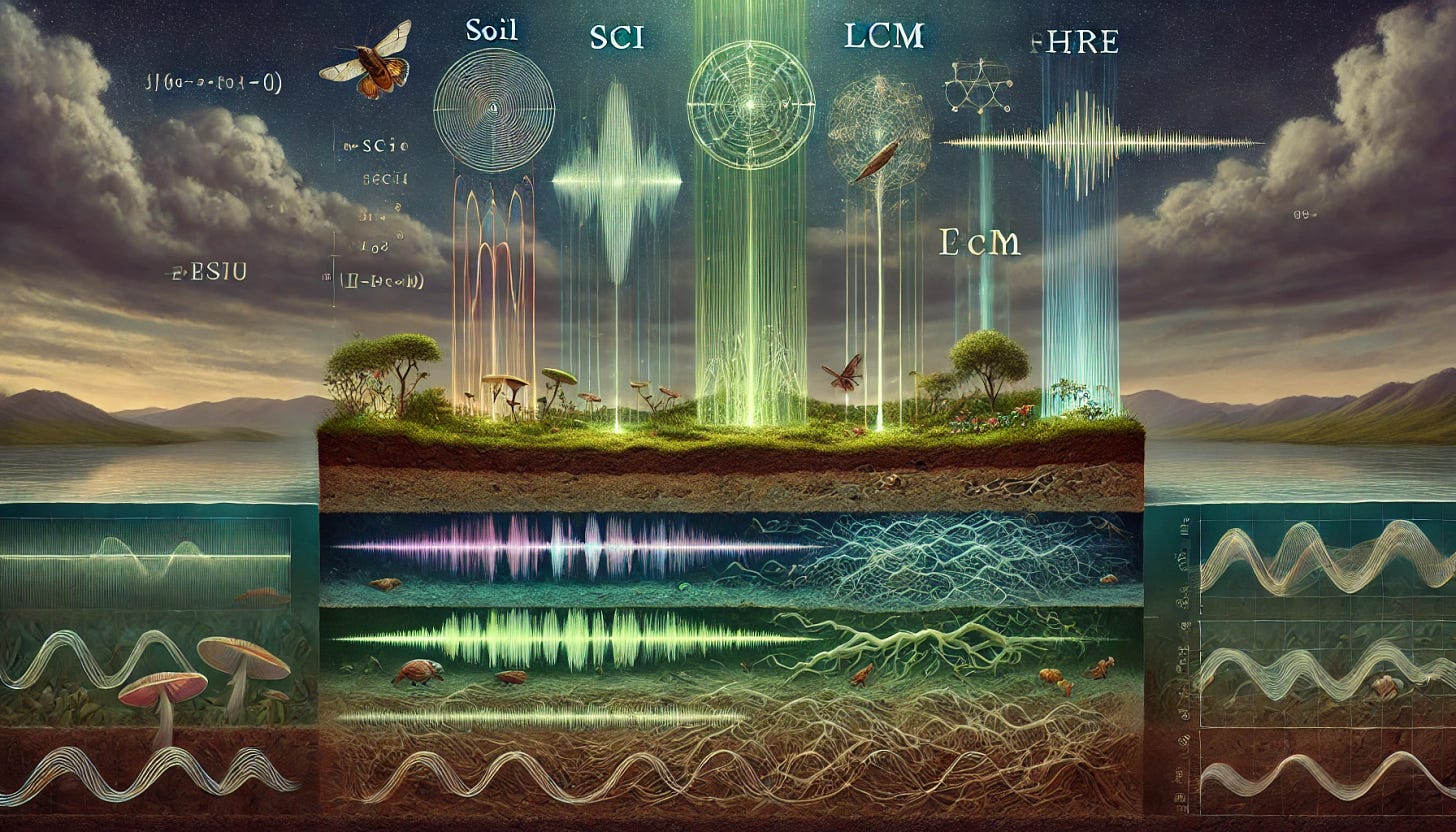#176: A State-Space Algorithm for Ecosystem Collapse Prediction
Part of the Series, "Listening to Nature – Building Fire-Resilient Landscapes- Part 6(ii)
Previously, we are exploring the Arctic and Sub-arctic region, infrastructure projects, however, I’m pausing the current Blindspots series. The last post, #173, traced Arctic vapor fields, polar dams, and hydrological feedbacks. There is more to uncover, especially across Canada’s northern corridors, but for now I need to step back. Other threads, both personal and professional, require attention.
Special thanks to the NECAPA network, and especially to Cliff Krolick, Stephen Kasprzak, and Roger Wheeler. Their years of research, vigilance, and early warnings form the foundation of what has been explored so far. I will continue working with them in the background to help clarify and refine key narratives, support ongoing synthesis, and prepare future episodes as needed.
In the meantime, we return to a different story, one we left mid-step, but never forgot.
If you remember, we were in the middle of this series: “Listening to Nature - Building Fire Resilient Landscapes”. The last episode was Post #147, where we brought together everything we’d built so far: layered ecological signals, predictive models, and a unified early-warning system for environmental collapse.
While the series has focused on building fire-resilient landscapes, the framework is far more versatile than it might appear. With slight adjustments in its mathematical formulation, the same approach can help predict not just wildfires, but droughts, hailstorms, and floods as well.
Because the core idea remains the same:
Nature speaks in layers.
Collapse begins quietly.
And every system gives off signals…
if we learn how to listen.
I didn’t leave this series hanging. And while today won’t be the final chapter, it is the next essential step. But before we go forward, let’s retrace the path that brought us here.
#142 – Fire: Nature’s Force or Our Failure?
It began with a different question:
What if wildfires don’t erupt without warning?
What if they begin days or even weeks earlier—as silence?
In #142, I invited you to consider wildfires not as isolated disasters, but as systemic failures to listen.
We imagined a landscape on the edge—where insects quiet down, amphibians vanish, and the smell of the forest changes.
We examined how current indices like KBDI and NDWI often miss these biological preconditions to collapse—and how soil microbes, birds, frogs, and insects might offer far earlier clues, if only we had the systems to hear them.
That post asked us to listen. The rest of the series asked: What exactly do we hear?
#143 – Soil and Fungal Layer: Collapse Begins Below
Collapse starts invisibly.
Soil moisture dips below 20% VWC
Xylem tension rises past -1.5 MPa
Fungal networks withdraw, glomalin declines, and the thermal memory of the soil is lost
Cracks form at the surface, breaking the root-fungi communication loop
This isn’t just the first warning. It’s the ground losing its grip on life.
#144 – Insect Layer: The First Acoustic Collapse
Insects are early responders. Long before plants show drought stress, they adapt their song, rhythm, and behavior.
Katydid frequency drops from 40kHz to <20kHz up to 45 days ahead of visible change
Cicadas fall silent as leaf moisture drops
Ant and grasshopper activity shifts as soil compaction and temperature rise
These aren’t reactions. They’re biological forecasts.
#145 – Bird Layer: Complexity Leaves the Sky
Birds carry both sound and migration intelligence.
The dawn chorus simplifies by 40%
Migratory patterns shift, avoiding drying landscapes
Corticosterone levels in feathers spike, showing stress invisible to satellite or human eye
The birds aren’t just gone. They’re warning us on the way out.
#146 – Amphibians & Reptiles: The Edge of Silence
These are the last audible indicators before dry landscapes tip into fire.
Frog call windows shrink from 6 to 2 hours
Amphibians cluster near final water sources
Lizards reduce basking when soils breach 35°C
By now, stress is no longer early-stage. The clock is ticking.
#147 – From Biological Whispers to Ecosystem Intelligence: How Multi-Layer Signal Processing Predicts Environmental Collapse
This post marked a turning point.










